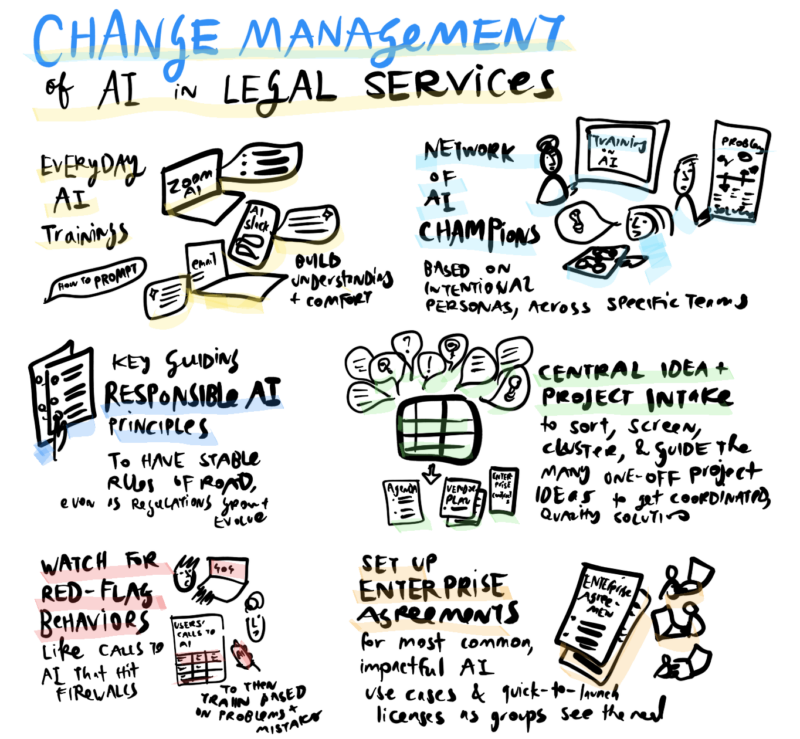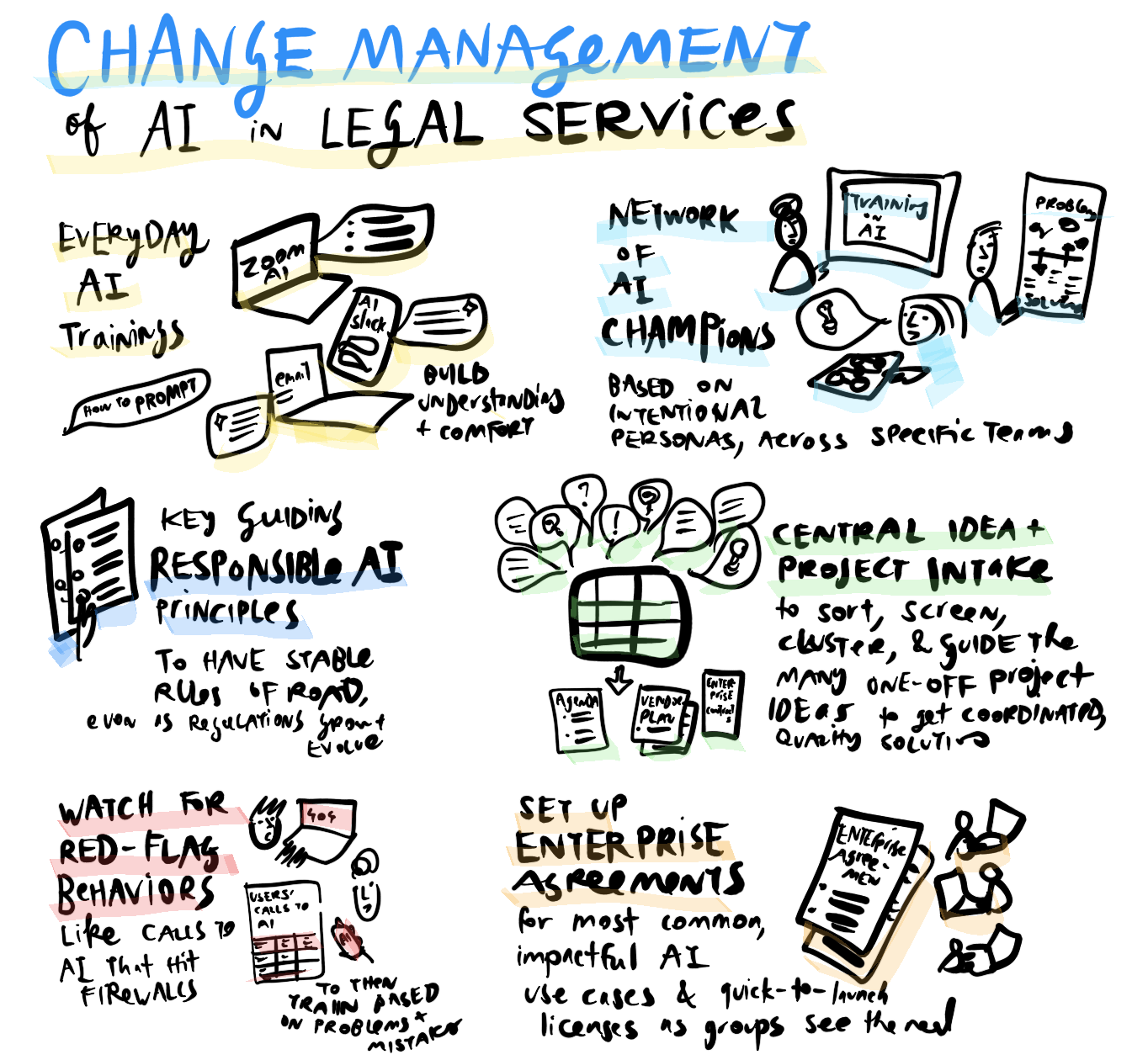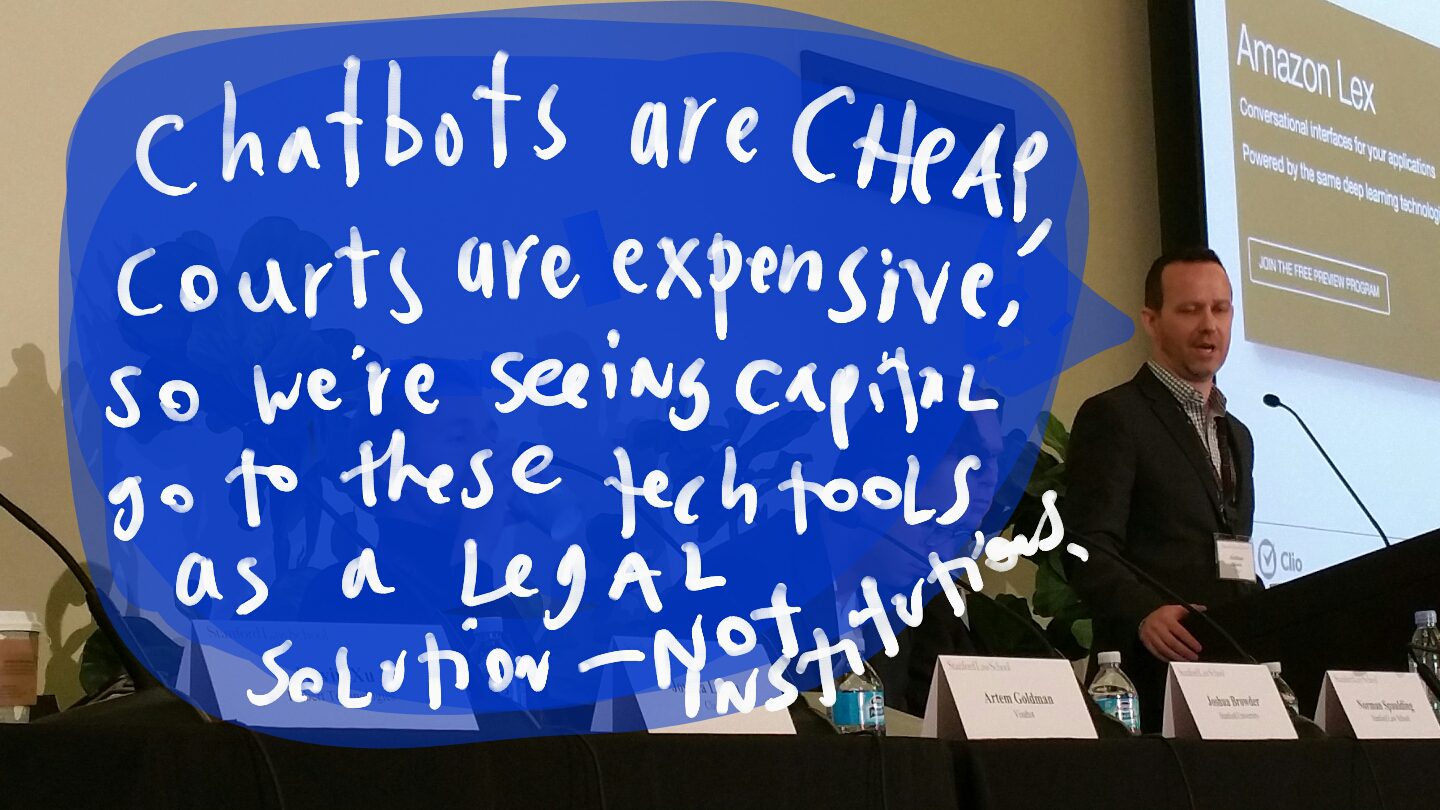At recent events, I’ve heard great strategies and examples from legal organization leaders, about how they are rolling out Responsible AI policies and R&D efforts inside legal groups.

Here’s a rundown of key change management & onboarding strategies for AI in legal organizations:
- Get everyone trained on “everyday AI” to build basic understanding and comfort. Do prompt trainings and other short, easy onboarding sessions to use AI on Zoom, Slack/Teams, email.
- Draft a set of AI Champion user personas for different practice groups, about who the ideal Team AI champion would be. Then recruit 1 person per team to get extra training, support, etc – and then have this champion who knew both the group & AI well.
- Set up a relatively short, flexible set of principles about what’s allowed or not (You will never put client data or work data to feed a 3rd party Model. You can use models, but you cannot let that model train on your work data.).
- Set up a central intake for all people with ideas for AI. Then have a team of their CIO/CTO and Legal office screen and cluster all the ideas that came in. Then find the best off-the-shelf solution or set up a plan for a new product for the top clusters. Prevent lots of one-off AI tool purchases or projects. Get a core set of licenses to AI tools that could meet the clusters of needs.
- Create AI Roadmap and Negotiate enterprise agreements with the most important, high-demand tools or cloud platforms, that ensured there would be enough security & adherence to core principles. Roadmap is based on the central intake + strategy sessions.
- Watch for Red Flag behaviors like people trying to get past firewalls or access un-approved AI systems. Also look for people ‘falling asleep at the wheel’ and not properly reviewing AI drafts. Have encouraging but stern approach: great you are trying AI! But this is against the rules, and we want to help you avoid any problems for your reputation & quality.



